Dall Sheep photos
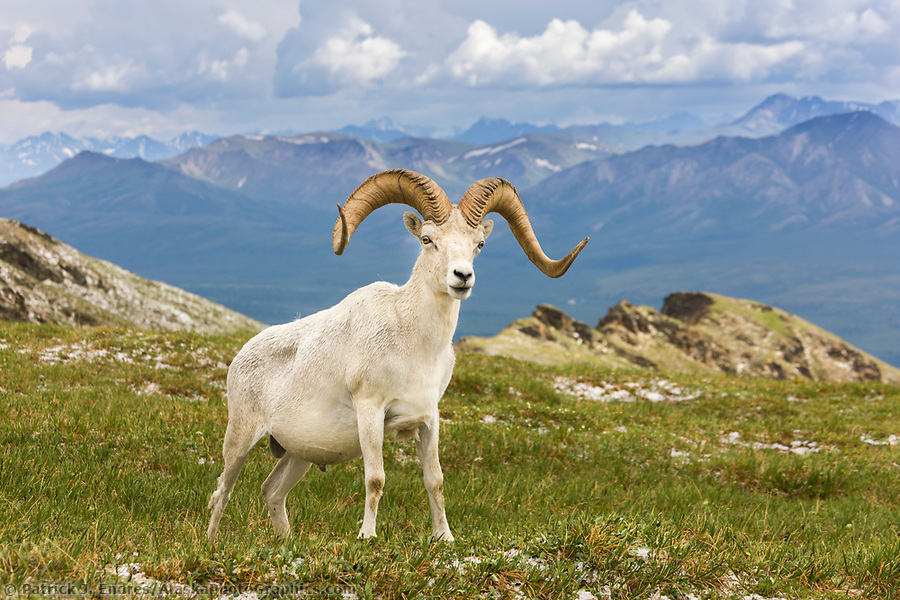
Dall sheep ram with full curl on a mountain ridge in Denali National Park, Interior, Alaska. (Patrick J. Endres / AlaskaPhotoGraphics.com)
All of the Dall sheep photos on this site may be licensed as stock photos for business use or purchased as fine art prints for your home or office. While sheep inhabit large areas of Alaska, the bulk of my Dall sheep photos is from the slopes of Denali National Park and the Brooks Range mountains in Alaska’s Arctic.
Dall Sheep (Ovis dali)
Dall sheep inhabit Alaska’s Interior and Arctic mountain ranges. They prefer open alpine ridges and meadows for feeding and retreat to nearby steep slopes for rest and safety. The winter weather in these mountain areas can be severe, making food sources sometimes challenging to access. Dall sheep generally inhabit high country but sometimes travel below timberline to feed or during seasonal range migration.
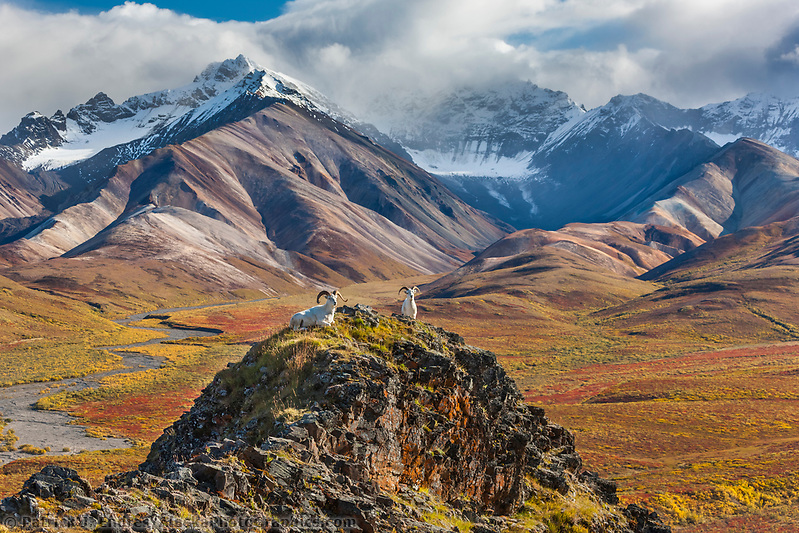
Dall sheep rams rest on a mountain ridge in Polychrome Pass, autumn colors in the distance, flanked by the Alaska Range mountains, Denali National Park, Alaska. (Patrick J. Endres / AlaskaPhotoGraphics.com)
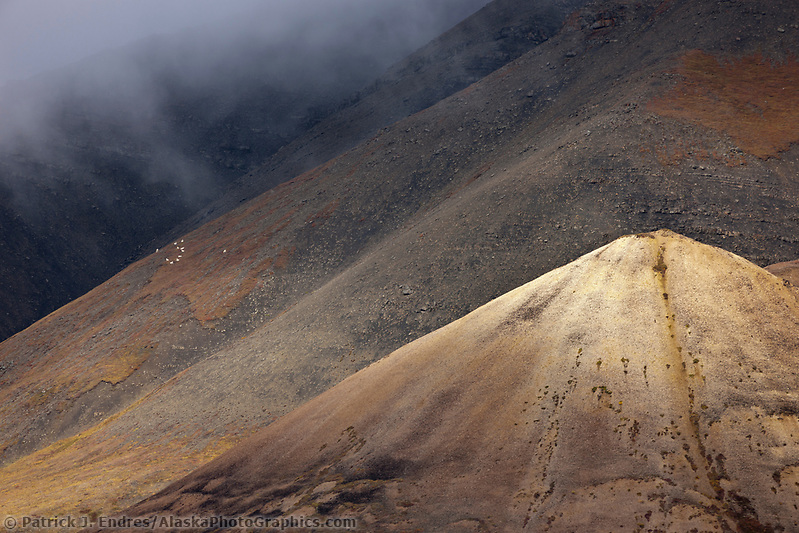
A flock of Dall sheep rests on the rocky mountain slope of Sable mountain in Sable Pass, Denali National Park, Interior, Alaska. (Patrick J. Endres / AlaskaPhotoGraphics.com)
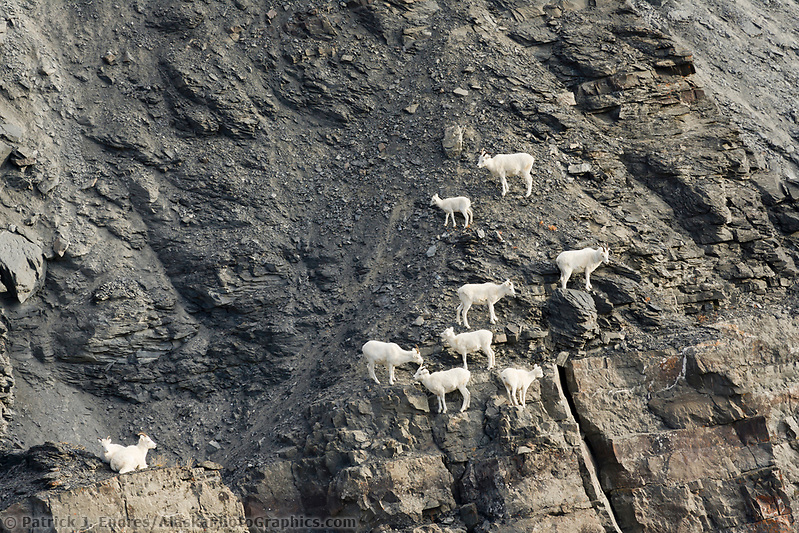
Dall sheep ewes and lambs climb along the rocky cliffs of the Brooks Range, Arctic, Alaska. (Patrick J. Endres / AlaskaPhotoGraphics.com)
Description
Color
Dall sheep are a white/ivory color; they are sometimes confused with mountain goats. However, goats and sheep inhabit different geographical regions and look quite different despite their similar color. Male Dall sheep are called rams, and females are called ewes.
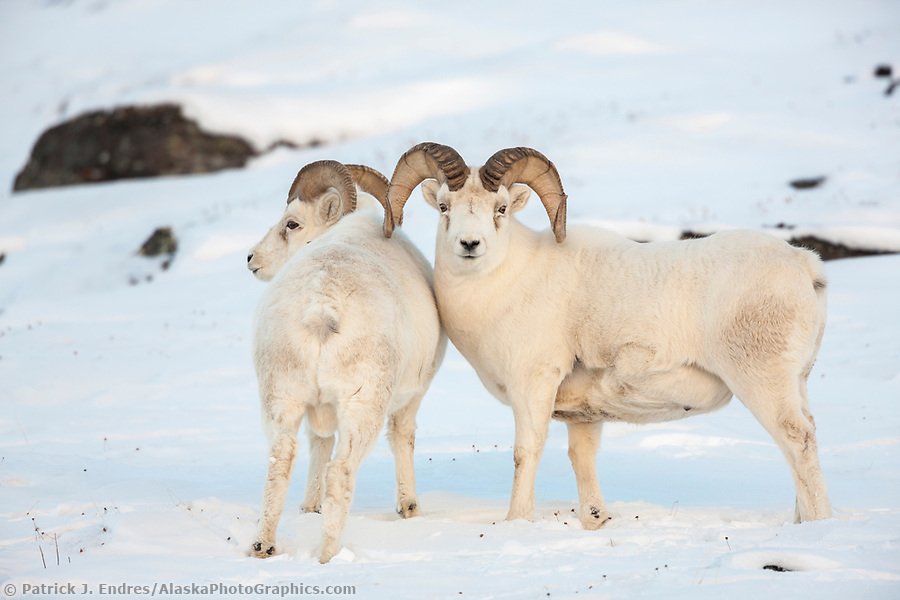
Dall sheep ram in the snow along the Brooks Range mountains in Atigun canyon. (Patrick J. Endres / AlaskaPhotoGraphics.com)
Horns
Massive curling horns distinguish the males from the more slender and slightly curved female horns. As rams mature, their horns form a circle when viewed from the side. Horn size can be used to determine age by referencing the distinctive growth rings that mark each year. Horns reach half a circle in about two or three years, three-quarters of a circle in four to five years, and a full circle or “full curl” in seven to eight years. They can live up to 12 years.
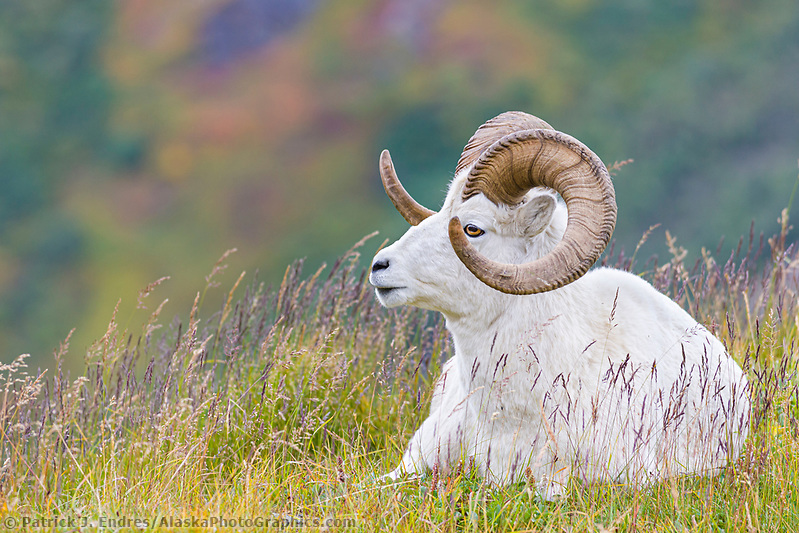
Dall sheep ram on a mountain ridge in Denali National Park, interior, Alaska. (Patrick J. Endres / AlaskaPhotoGraphics.com)
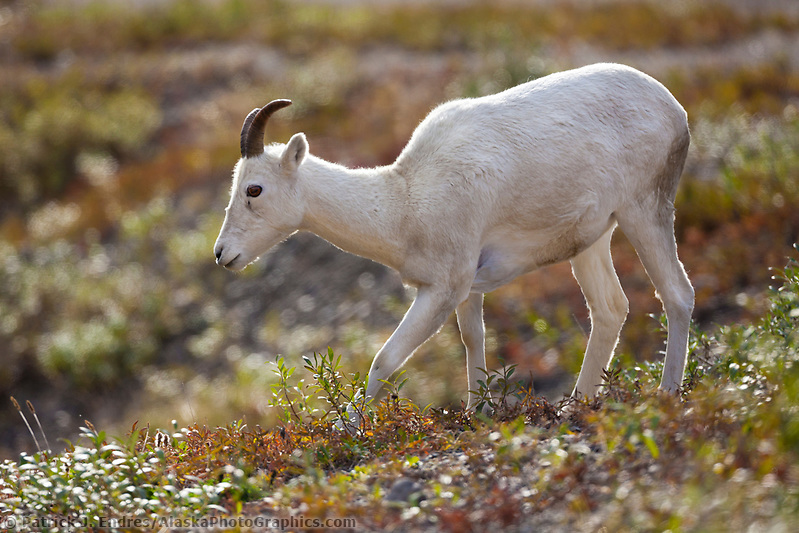
Dall sheep ewe, Atigun Pass, Brooks Range mountains, arctic, Alaska. (Patrick J. Endres / AlaskaPhotoGraphics.com)
Lambs
Lambs are born in late May or early June. As the birthing time approaches, ewes seek solitude and protection on rugged cliffs. Ewes bear a single lamb and remain in the cliffs’ safety for a few days until the lambs are strong enough to travel. Lambs begin feeding on vegetation within a week after birth and are usually weaned by October. Typically, ewes have their first lamb at age three and produce a lamb annually.
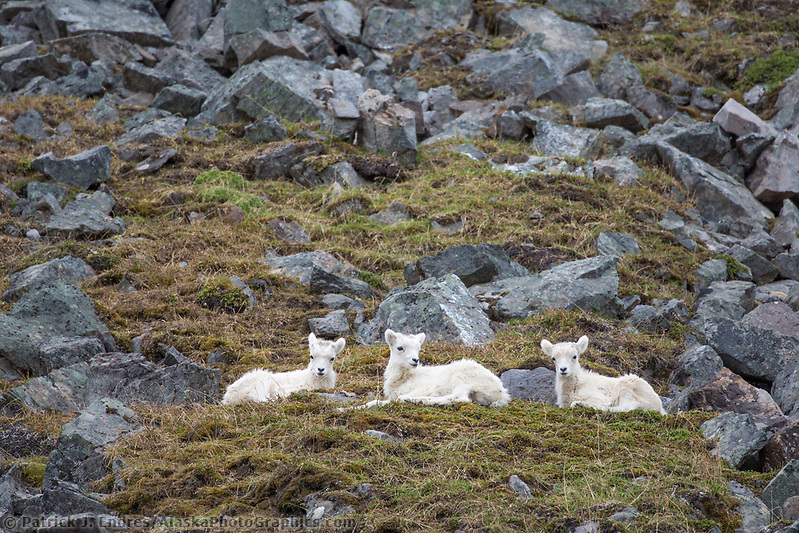
Dall sheep spring lambs in the Brooks Range mountains, Alaska. (Patrick J. Endres / AlaskaPhotoGraphics.com)
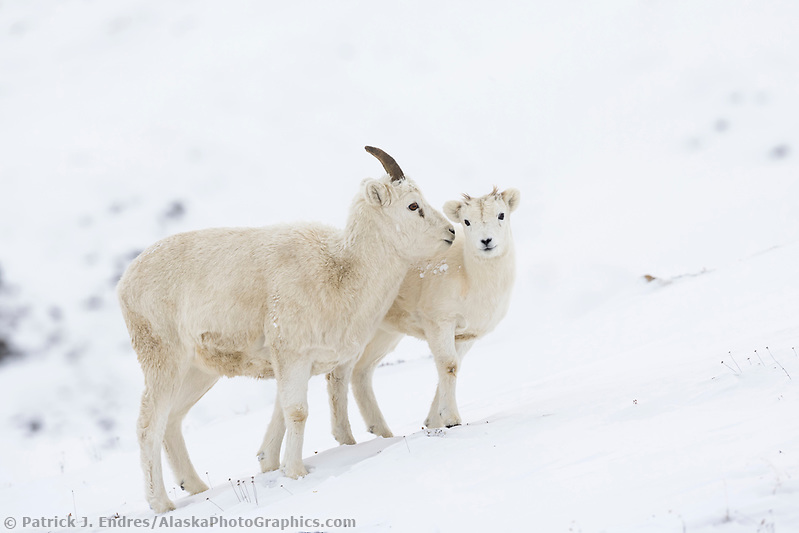
Dall sheep ewes and lambs forage for food in the snow in Atigun Pass, Brooks Range, Alaska (Patrick J. Endres / AlaskaPhotoGraphics.com)
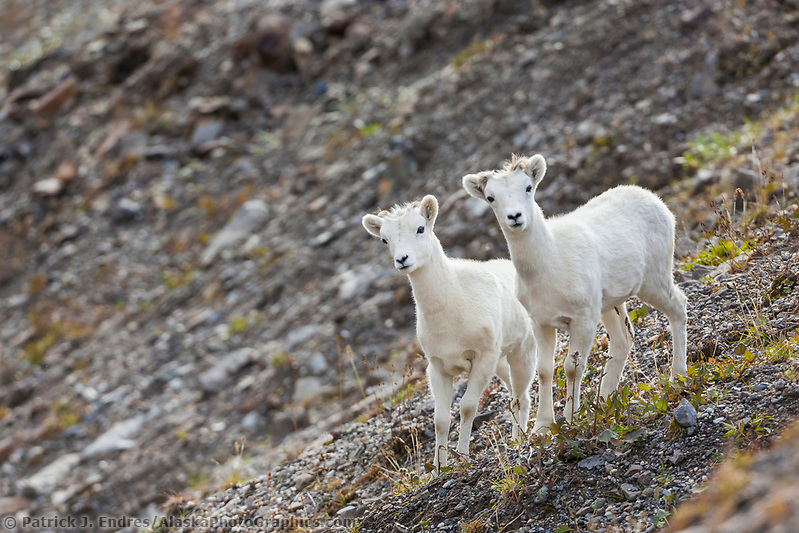
Dall sheep lambs, Atigun Pass, Brooks Range mountains, arctic, Alaska. (Patrick J Endres / AlaskaPhotoGraphics.com)
Social Behaviour
Sheep have well-developed social systems. Adult rams live in bands that seldom associate with ewe groups except during the mating season in late November and early December. The horn clashing is used to establish order among the group. The clashing occurs throughout the year but increases in frequency before the mating season, or “rut.” Dall rams typically do not breed successfully until they approach dominance rank, usually at full curl horn size.
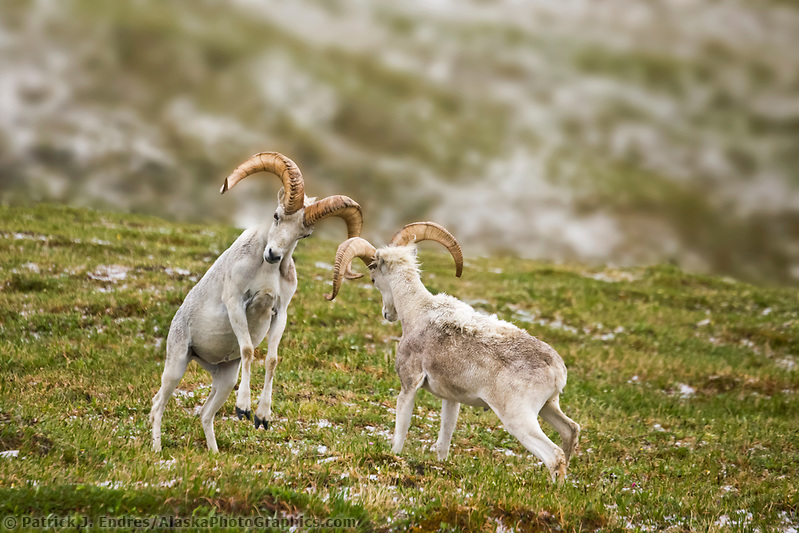
Two Dall sheep ram crash horns as a part of a dominance display on a mountain ridge in Denali National Park, interior, Alaska (Patrick J. Endres / AlaskaPhotoGraphics.com)
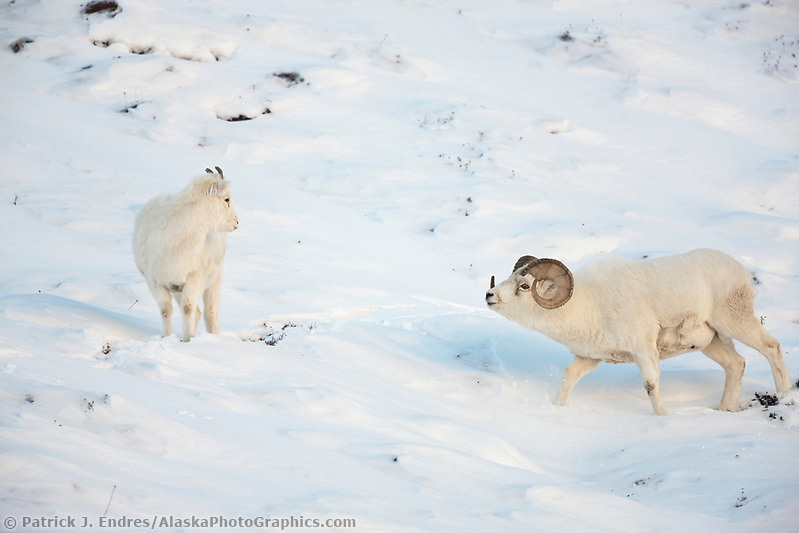
Dall sheep ram follows ewe in the winter snow during the rut in Atigun canyon, Brooks Range mountains. (Patrick J. Endres / AlaskaPhotoGraphics.com)
Food
Dall sheep diets vary based on location. During the summer months, when food is abundant, they consume various plants. Due to snow cover, the winter diet is much more limited and consists primarily of dry, frozen grass and sedge stems. Some populations consume significant amounts of lichen and moss during winter. Many Dall sheep populations visit naturally occurring mineral licks during the spring. While sheep may travel to mineral licks, they are loyal to their home ranges.
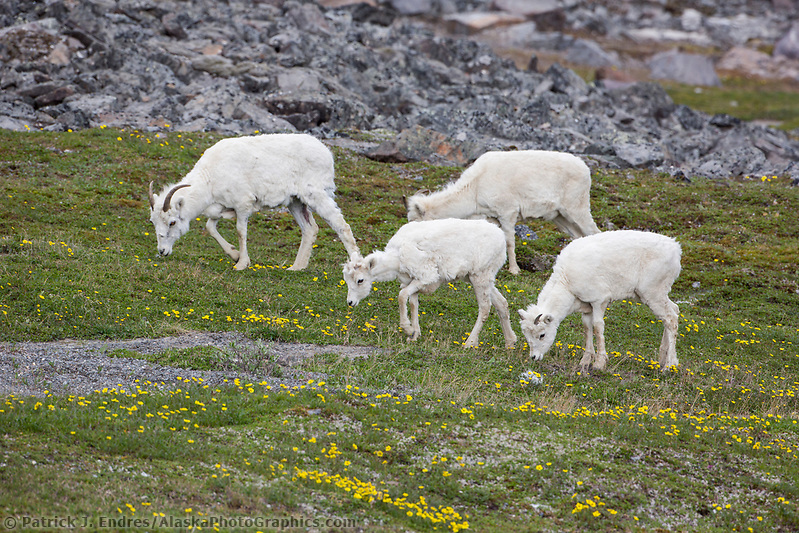
Dall sheep ewes graze on the tundra vegetation decorated by ross avens in the Brooks mountain range, Alaska. (Patrick J. Endres / AlaskaPhotoGraphics.com)
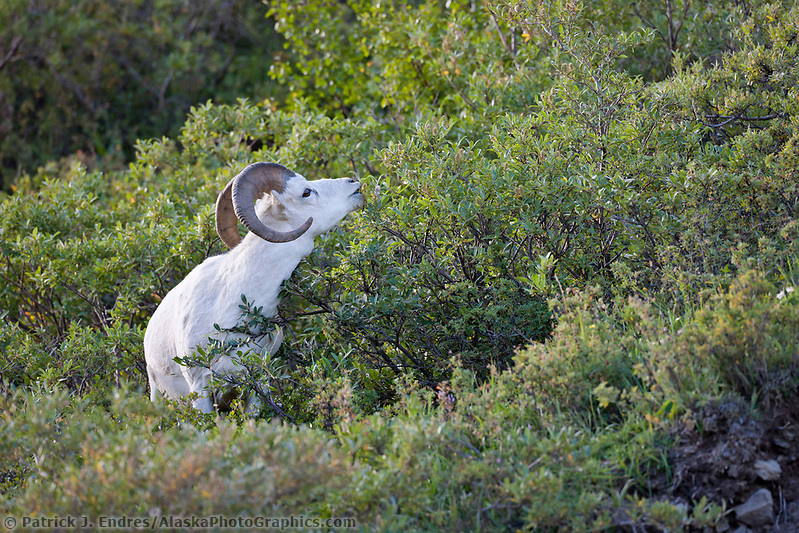
Dall sheep ram feeds on willows in Polychrome Pass, Denali National Park, Interior, Alaska. (Patrick J. Endres / AlaskaPhotoGraphics.com)
Photographing Dall Sheep
Photographing Dall sheep is popular with many visitors and residents of Alaska. The greatest success can be found in areas where sheep are protected from hunting pressure. Denali National Park is one of the most popular and favored destinations for sheep photography because the animals show little fear of humans. Access to sheep habitat, however, may require some climbing since sheep prefer the high alpine slopes for summer feeding.
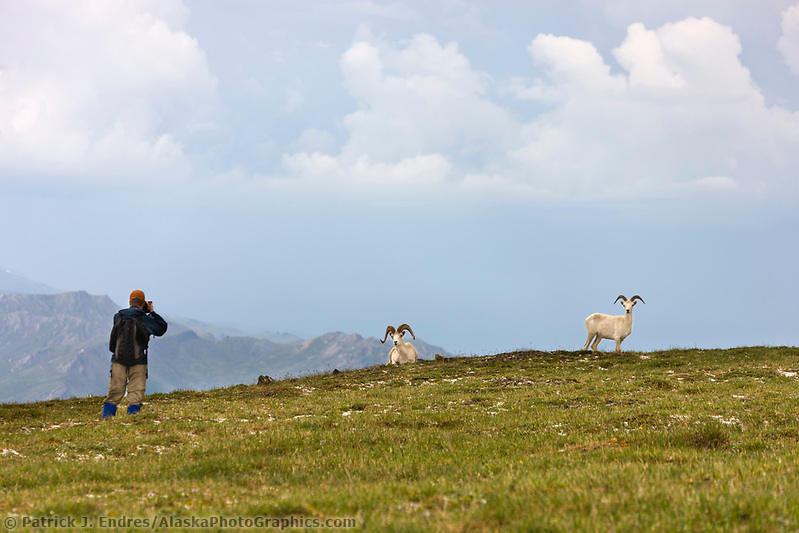
Hiker photographs Dall sheep on a mountain ridge in Denali National Park, interior, Alaska. (Patrick J. Endres / AlaskaPhotoGraphics.com)
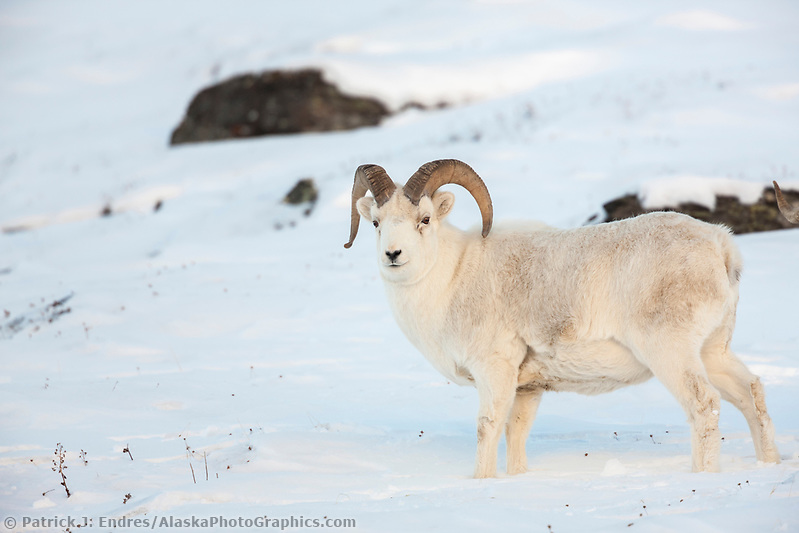
Dall sheep ram in the snow along the Brooks Range mountains in Atigun canyon. (Patrick J. Endres / AlaskaPhotoGraphics.com)
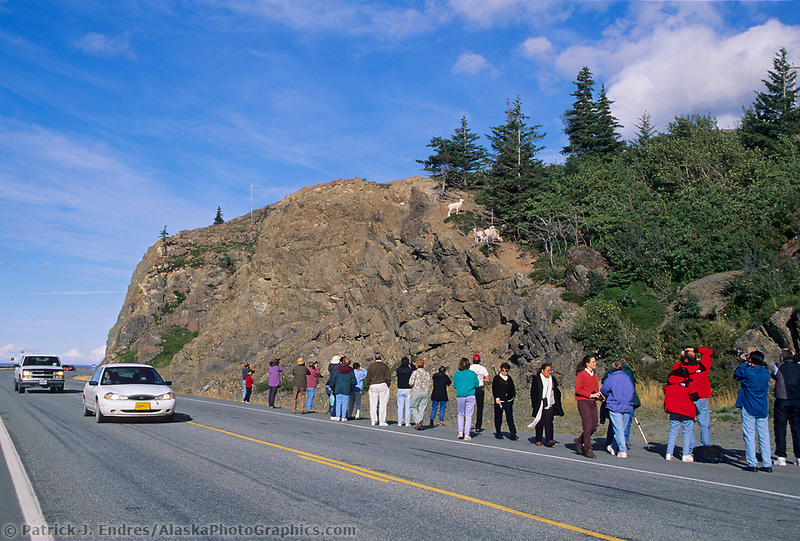
Tourists congregate along the Seward highway to view Dall sheep ewes with lambs in southcentral Alaska. (Patrick J. Endres / AlaskaPhotoGraphics.com)
